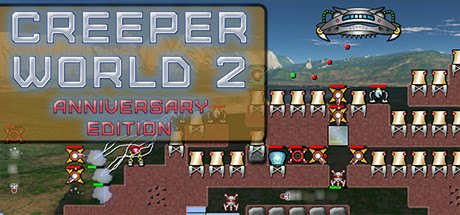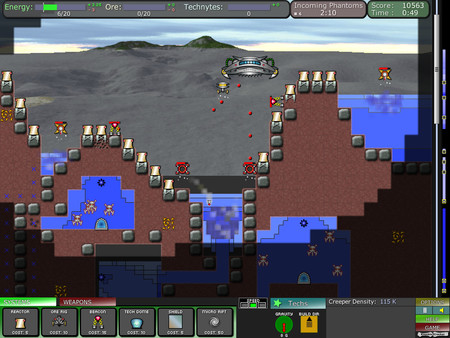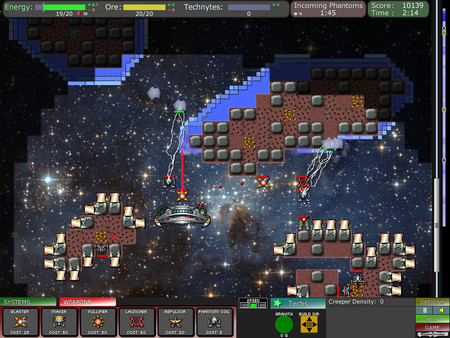Creeper World 2: Anniversary Edition
by Knuckle Cracker





The Developer Says...
Deceptively simple... amazingly deep. Creeper World 2 thrusts you into the 14th millennium fighting and enemy that flows and oozes through the terrain. Employ advanced weapons,gravity manipulating repulsors, wormhole like rifts, and your own wit against this never yielding enemy.
Keywords
Players Like...
❤ Gameplay Overview
You take on the role of Admiral Abraxis, who arrives 30 years after the events of the first game to battle the relentless Creeper - a fluid-like alien entity threatening to consume the entire galaxy. The gameplay revolves around constructing defensive structures and managing resources to push back against the Creeper's encroachment and destroy the source emitters spawning it.
❤ Unique Side-Scrolling Perspective
The game features a side-scrolling viewpoint, unlike the top-down perspective of the first and third entries. This change makes gravity a crucial factor, as the terrain and placement of structures influence how the Creeper flows and behaves. Players must carefully excavate and control the terrain to create pathways and chokepoints, funneling the Creeper's advance.
❤ Expanded Weaponry and Mechanics
Compared to the first game, this sequel introduces a variety of new defensive structures and special weapons. These include gravity manipulators that can repel the Creeper, tunneling units that can burrow underground, and conversion bombs that can turn pools of Creeper into temporary allies. The game also features "special" levels that challenge players to adapt their strategies, such as missions with time constraints to rescue escape pods.
❤ Tactical Depth and Replayability
The side-scrolling setup, varied level designs, and assortment of unique weapons and mechanics offer players many different approaches to tackling each challenge. The inclusion of a random map generator, custom maps, and bonus missions further extend the game's longevity for dedicated fans.
❤ Difficulty Curve and Learning Curve
Reviewers note that the game has an uneven difficulty curve, with early levels being relatively straightforward but later missions introducing much tougher "gotcha" moments and time-sensitive objectives. The learning curve is also cited as being steeper than the first game, as players must adapt to the new side-scrolling perspective and master the expanded mechanics and unit types.

